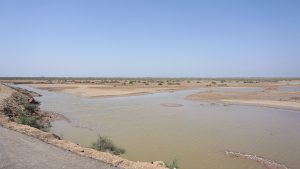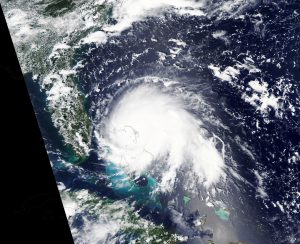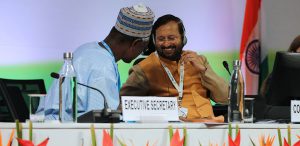As Pakistan navigates changing power equations in the world, and the crisis in Kashmir, the China Pakistan Economic Corridor (CPEC) stands out as the one possible silver lining for Pakistan. However, while CPEC is still one of the largest bilateral investment projects underway anywhere in the world, today its momentum in Pakistan is being regularly questioned. The scale of the promise is so large that it invites anxiety as well as awe in its sweep. With early harvest projects worth USD 18.9 billion already underway in Pakistan in its first leg, the planning by Islamabad should bring much higher infows than timelined right now. Yet it simultaneously tests the Pakistan government’s capacity to use the opportunity to its advantage.
China’s ability to pull 800 million people out of poverty in four decades through economic reforms has presented a compelling model for Pakistan to follow. However, given a tough series of IMF-induced measures for stabilisation, economic growth in Pakistan seems to have slowed down even more. Even though the centre is adamant that there has been no slowdown on CPEC goals, the sense in the provincial capitals is different.
Among the big signature projects, infrastructure and energy top the wishlist. While Thar coal has generated power that now feeds into the national energy grid, officials claim that Islamabad’s full-throttle drive on CPEC has been eased up and work on the projects pushed down the priority list. Yet at the same time, the economic impact of CPEC is seen as potentially so game-changing, that it cannot be ignored. With the precipitous slide of an overvalued rupee, and public finances straining at crippling deficits, the prospect of Chinese-led investment growth is the only rainbow on a horizon clouded by high economic stresses for a fast-growing population. In best-case estimates, in fact, it is believed that Chinese investment can potentially stimulate an eight to 10 percent increase in Pakistan’s GDP by 2030. In worst-case futures, that number may well be unreachable, given Islamabad’s current inability to operationalise promised reform.
Furthermore, even though Pakistan’s new economic policy focus seems to be geared towards operationalising these promised reforms, the goals that it has espoused have remained blurry and do not align with parliamentary and public reporting. Separating myth from reality and setting clear goals for inclusive planning at the federal, provincial and grassroot levels should be a top priority for the government. As a democratic country with multiple languages and ethnicities that find expression in a huge traditional and social media, even small confusions or communication gaps can create severe cascades of backlash at all tiers of governance. For example, community level politics is critical to navigating trade union tensions. In Gwadar, the lack of consultations with the local fishermen in the building process of terminals and jetties that displace their livelihoods and boats has been a major cause for tensions. It is precisely this ambivalence that has hampered the transfer of knowledge and caused the failure in connecting nodes at the downstream institutional level.
See: Gwadar fisherfolk worry about One Belt One Road
Moreover, while some of the Pakistani concerns pivot around transparency, repayment terms and capacities, most of them do not question the intent of the embrace. Provinces within Pakistan that voice complaints either do so because of Islamabad’s growing institutional opacity or simply because they want more of the pie.
As with all such big platforms, the challenges to CPEC 2.0 are legion. Understanding that the real challenges to realising the maximum potential from CPEC are internal is a crucial step towards successfully benefitting from it. These are embedded in three Cs’ of capacity, coordination and consensus. Pakistan, undeniably, has to scale up its capacity and coordination while building consensus in identifying policy frameworks for the opportunity this platform offers.
Consensus
One of the foremost roadblocks in effective consensus-building on CPEC has been the divergence in processes between a centralised Chinese communist party government and Pakistan’s nascent democratic parties and governance structures.
With CPEC envisioned as a cross-Pakistan project that involves all of four provinces, navigating Pakistan’s multi-party provincial structures and building bridges with all political parties has been a challenge. However, China has sought to overcome the Pakistani government’s own inability to build consensus and manage the political centre-field by engaging directly with several political parties at the provincial and federal level, to cultivate a better understanding of CPEC’s vision and priorities. This process has culminated in the establishment of a CPEC Political Parties Joint Consultation Mechanism, which has seen the Communist Party of China engage with a broad spectrum of Pakistan’s political parties.
Since CPEC is not a parochial one-party or one-province ambition, it requires strategic levels of consensus-building to ensure each province’s stake in the project is protected and that Pakistan’s government moves forward collaboratively. Given the clear multi-party buy-in and commitment to CPEC, building consensus between Pakistan’s political parties should not be as arduous of a project as it seems. However, the federal government’s attempts for building political consensus between political parties has been poor because of the lack of transparency about CPEC between the different wings of government. The parliament is not brought into the fold by the federal government and has also consistently lacked an appreciation of the need to build stakes in parliamentary leadership at the highest level. This failure has led to political instability hampering the path to consensus and in ensuring that CPEC is implemented at optimum capacity. The federal government is often seen as absent or dismissive of this crucial process of political coalition-building.
Capacity

Another major challenge to Pakistan has been the government’s capacity deficit to absorb concessionary loans and grants which has been only worsened by their inability to plan how these will be absorbed in the future. Given the multiplicity of project designs under CPEC, both in the government and the private sector, it is clear that the Planning Commission, in which CPEC is nested, is both under-resourced and under-powered.
In terms of doing business reforms, most of the improvements have come at the provincial level from Punjab and Sindh, limiting the development only to Karachi and Lahore. Even though these efforts are commendable, they are insufficient for the country in the longer run as they give the impression that the government is only fixing what can be measured. It is the responsibility of the federal government to effectively disseminate information about the economic impact of CPEC that provides a blueprint to the rest of the provinces to implement business reforms that can equip them with the right tools to benefit from CPEC.
Furthermore, as Morial Shah wrote in an oped Pakistan’s current Special Economic Zone (SEZ) law, instead of decentralising and curbing bureaucratic controls to create elbow room for private enterprises, adds impediments such as approvals, areas of overlapping jurisdiction and poorly allocated regulatory authority. Recent reports suggest that while authorities are still busy with evaluations and land acquisition, work on any of the nine special economic zones is yet to begin.
The Chinese ambassador to Pakistan, Yao Jing, has repeatedly asserted that Pakistan has the potential to attract huge Chinese investments only if they can develop better trade policies, offer tax incentives and foster an investment-friendly climate. Currently, investors are required to get multiple No Objection Certificates (NOCs) before investments can begin. Hence, while SEZs in other countries such as China, UAE, Thailand and Georgia offer a one-stop-service for all regulatory matters, in Pakistan, the Board of Investment (BOI) serves that purpose which, due to the lack of a tailor-made framework for SEZs, leads to bureaucratic red tape. Reforms should be aimed at empowering the provincial governments to process the application of SEZs to save time and money instead of being dependent on Islamabad.

Another significant hurdle in Pakistan’s ability to generate employability under CPEC initiatives has been the capacity of our human resources. While Pakistan boasts the ninth-largest labour force, lack of investments in technical and vocational training have seriously affected labour skills. As a result, while infrastructure projects under CPEC continue to employ over 90% domestic labour, the percentages shrink dramatically in technical projects such as energy and digital connectivity. Presently, several Chinese companies are undertaking specific on-the-job training programmes for semi-skilled workers, both in China and in collaboration with universities in Pakistan that are partnering in dedicated short training courses.
CPEC has so far created nearly 68,382 direct jobs, according to the Ministry of Planning, Development and Reform. The China-Pakistan Economic Corridor Committee Meeting on June 13, 2019, discussed that CPEC has the potential to further generate anywhere from 800,000 to 1,500,000 jobs till 2030. For Pakistan, investments such as CPEC are valuable for their spillover impact on local firms and labour in terms of transferring technology, boosting skills and improving the quality and quantity of employment. The availability of productive, skilled and reasonably priced labour is an important determinant of the location for foreign investment. For Pakistan’s demographic structure, with a burgeoning young labour force, the opportunity to generate high-value jobs from CPEC investments is not one that Pakistan can afford to miss.
Coordination

Coordination and communication is critical to connecting institutional dots. Effective communication is the overarching element of power in the 21st century, and CPEC’s scale and ambition must best be addressed with clarity. Provinces have to be given the confidence that CPEC will be transparent and equitable. Unfortunately, to this day, little is known about the government contracts signed under CPEC.
When it comes to a discussion of provincial stakes, it is fair to start with Balochistan — the home of Gwadar, which is the centrepiece of the CPEC maritime Silk Road linkage. It goes without saying that the province has several deprived regions that need development and connectivity. The people of Balochistan and their public representatives have their hopes pinned on CPEC as much as the rest of Pakistan, if not more. For years, the mineral-rich province has provided resources like natural gas. But, at home, it has witnessed scarcity of resource and even gas at multiple levels. Its only consolation has come in the form of the 18th Amendment which ensures them ownership of their own resources through the National Finance Commission award.
It has already been indicated that the Balochistan government has repeatedly displayed confusion about the lack of progress on the Western Route. They have also raised questions about the province’s share in the multi-billion project remaining at a meagre 2-3%. In the absence of transparency and provincial coordination, several voices suggest that the provinces aligning with the Eastern Route will be the larger beneficiaries of CPEC investments. In parliamentary committee meetings, members from both Balochistan and Khyber Pakhtunkhwa have protested against the lack of groundwork on CPEC in their respective provinces. Additionally, lack of water infrastructure is a major roadblock to development in Gwadar as well as other parts. These are areas that beg the government’s attention but little of substance has been communicated during the Senate Special Committee meetings to date.
Nonetheless, the main political parties of Balochistan have been on the record to offer their full support to the central government — as have other political and opposition parties from Sindh, Khyber Pakhtunkhwa and Punjab — on all CPEC projects.
Now, as CPEC drives into the next phase, the flow of substantive informational exchanges between various provincial and central departments as well as the private and public sector should not remain ambiguous anymore. There are obvious fault lines in communication as various members of the Senate CPEC Committee, who are also representatives of their provinces, have raised questions about timelines and priorities. Most recently, the increasing scrutiny of CPEC projects by the National Accountability Bureau (NAB) has stalled the process of approval for the ML-1 railway line — a project of immense strategic importance to CPEC. The federal government will have to demystify these details and, for that, it needs to make use of the parliament.
It is clear that in order to be functional, the most effective means of communicating across the federation would be to use parliamentary committees (CPEC committees are fully functional in the Senate) to ensure transparency and build a narrative that has a buy-in from all parties and provinces. The fact remains that, as representatives of their communities, all parliamentarians and political parties do see the benefits of CPEC and the potential for their own communities, once clear timelines and execution of projects becomes visible.
The way forward
Going forward, here is what the government needs to do urgently in order not to miss this opportunity. Future development may be less arduous if a one-window autonomous CPEC Authority is set up, which may already be on its way as recommended by the Senate Special Committee on CPEC. This would manage the internal challenges of planning, financing and coordinating between institutions, provinces and agencies to build momentum on speedy outcomes. Furthermore, tax regimes would have to be rationalised, infrastructure and energy provisions need to be ensured, transparency of contracts have to be addressed to avoid controversy and sovereign guarantees to provinces where needed made available. Flexible financing for private joint ventures and structural reforms also need to be planned and undertaken if any of the promised gains are to materialise.
Additionally, tax incentives can be conditioned on training labour and tax breaks can be conditioned on sourcing components from local firms, which also translates, albeit more indirectly, into local employment gains. In a bizarre and rather sharp contrast to this, the current service sales tax regime imposes a tax on business trainings, thereby increasing the costs of private training. Business-friendly measures can directly address the market failure that plagues the labour market; by compensating firms that invest in labour, the government can plug in the gap between private and social benefits.
Finally, amendments to the SEZs Act of 2012, which are currently being debated in parliament, must ensure that SEZs provide Chinese and other companies, at a minimum, the same incentives that other South East Asian and African SEZs are currently providing. In addition, to deter rent-seeking and to guarantee that industries are market-driven, SEZs must ensure devolved decision-making that takes the private sector on board. With the majority of SEZ companies expected to be from the private sector, ensuring that market dynamics determine SEZ policies will be essential for long-term viability of SEZ companies. A clear ‘rules of engagement’ agreed upon by both China and Pakistan would also prove beneficial in terms of expected outcomes.
Ultimately then, the ball is squarely in Islamabad’s court. The Chinese have done what they mostly need to. If urgent reforms are not undertaken for coordination and planning, there is a clear danger of the big CPEC opportunity shrinking to a much smaller platform than its initially conceived big-scale and transformational potential. History will judge all actors poorly — particularly the current PTI government — if they don’t seize the moment and the options for what they are.
Debt diplomacy
Riding a global trend, a symptom of Western anxiety is the new narrative of CPEC and the Belt and Road Initiative (BRI) being bloated, unplanned and predatory initiatives. The spectre of swamping Chinese indebtedness is cited by Western powers as a critical neo-imperial gambit that cannibalises developing, weaker economies, while ignoring their own debt profiles and structural lending to countries like Pakistan. This public conversation naturally stokes real fears in Pakistan, where the opacity of Chinese contracts with government are cited as troubling for good governance and debt-ratio metrics.
The fact is that 90% of developing country debt, including Pakistan’s, is owed to Western countries or institutions. Servicing this debt consumes about 30% of hard currency outflows from these developing countries, notwithstanding examples of Sri Lanka or Malaysia. At the Second BRI Summit in April 2019, China has sought to realign its investments in large-scale projects by addressing concerns of exclusivity, sustainability and standards. The launch of the new Debt Sustainability Framework under the Chinese Ministry of Finance, coupled with the Multilateral Cooperation Center for Development Financing are meant to address concerns of debt sustainability, and build multilateral cooperation mechanisms to help share financing for infrastructure projects, largely restricted to policy banks such as the China Development Bank, EXIM Bank of China and other state-owned banks.
As Pakistan enters the second phase of CPEC, it is important to understand the measures and projections surrounding the arguments over debt risk to inform policy behaviour. One of the main concerns is that CPEC is adding on to Pakistan’s already ballooning public debt. This is not entirely true.
According to the official Chinese statement, the early harvest projects are worth USD 18.9 billion in investments which is made up of USD 6 billion in government loans with a 2% interest rate and private investments in the form of equity worth USD 3 billion, and USD 9.8 billion in commercial loans with a 5% interest rate. So far, the government of Pakistan only needs to repay USD 6 billion over the span of 20-25 years. It is important to note that, although commercial loans figure in the country’s total external debt and liabilities, it is in fact not guaranteed by the government. This is proven by the State Bank’s official figures that do not show any guaranteed private-sector external debt. CPEC makes up for 6% of Pakistan’s total external debt worth USD 105.84 billion whereas other multilateral loans run about four to five times more, dwarfing CPEC loans in comparison.
Aside from the debt question, some worry about the risk of asset seizure in case Pakistan fails to repay its Chinese loans. Sri Lanka is often cited as a cautionary tale in this regard. However, the circumstances that led Sri Lanka to lease its port to China point to a much more pervasive balance of payment crisis that goes well and beyond its Chinese loans. The Rhodium Group, in a recent study, looked at 40 cases of Chinese debt renegotiations. Their findings reveal that asset seizure is indeed a very rare occurrence. In fact, deferment, change of loan terms and deadlines, refinancing or even write-offs or debt forgiveness are more common outcomes. The refinancing and renegotiation given to Angola, Ecuador, Ethiopia, Mongolia and Ukraine support this claim. Altogether, China has renegotiated around USD 50 billion worth of debt.
With its ballooning external debt, questions surrounding the country’s capability to repay its loans without risking its assets are not unfounded. The real risk lies in Pakistan’s ability to stabilise its balance of payments. Pakistan must, therefore, focus on building cooperation frameworks and reducing the opacity of CPEC finances.
This piece was originally published in Dawn‘s magazine Eos on September 1, 2019, and has been republished with permission.
![<p>Graffiti celebrates CPEC on the walls of Pakistan [image by: Zofeen T Ebrahim]</p>](https://dialogue.earth/content/uploads/2017/05/CPEC.jpg)

![Climate activists in Karachi, Pakistan holding signs in the march for the climate [image courtesy: FridaysForFuture Pakistan]](https://dialogue.earth/content/uploads/2019/09/climate-change-march-Pakistan-300x169.jpg)





